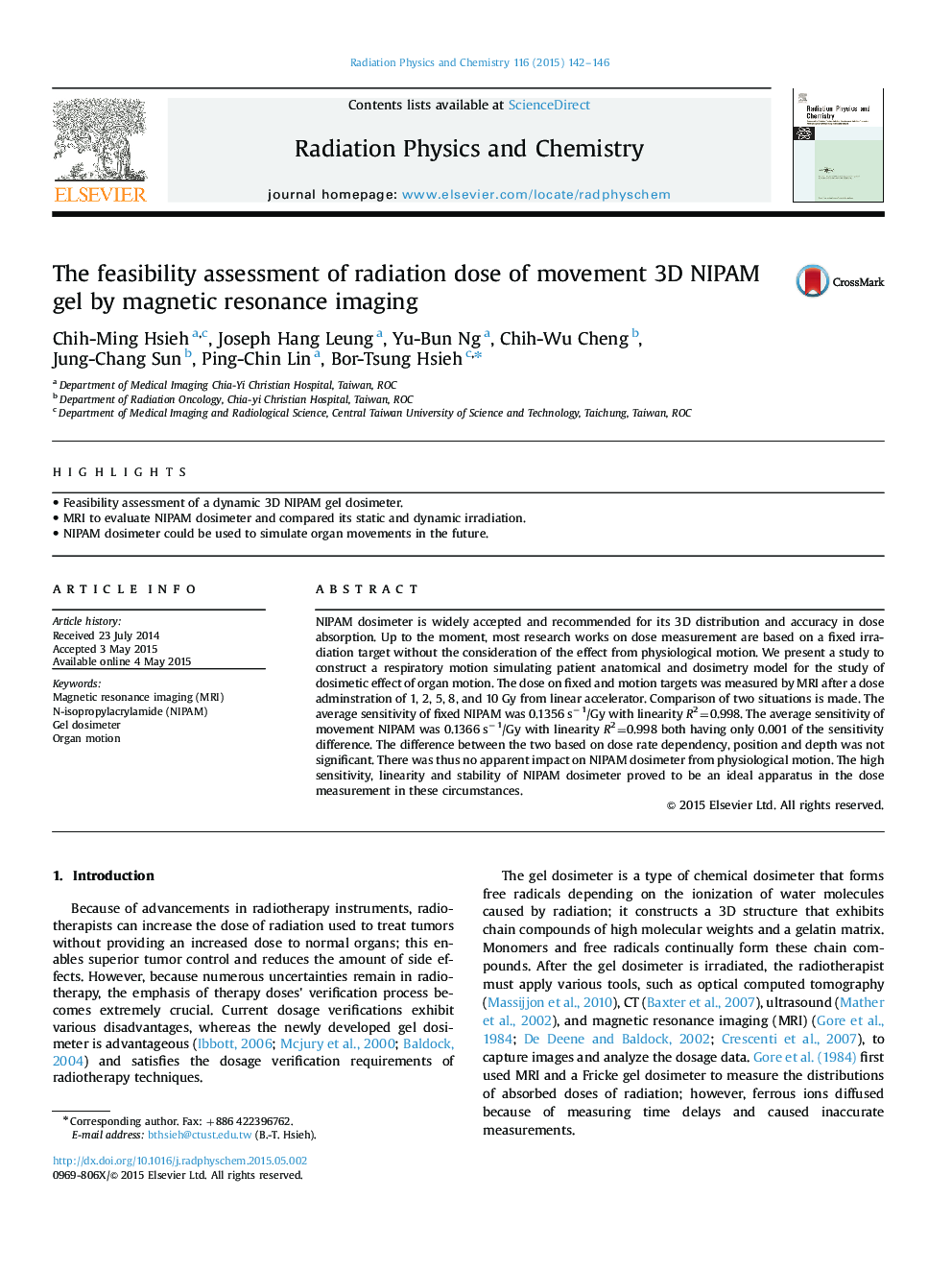| Article ID | Journal | Published Year | Pages | File Type |
|---|---|---|---|---|
| 8252549 | Radiation Physics and Chemistry | 2015 | 5 Pages |
Abstract
NIPAM dosimeter is widely accepted and recommended for its 3D distribution and accuracy in dose absorption. Up to the moment, most research works on dose measurement are based on a fixed irradiation target without the consideration of the effect from physiological motion. We present a study to construct a respiratory motion simulating patient anatomical and dosimetry model for the study of dosimetic effect of organ motion. The dose on fixed and motion targets was measured by MRI after a dose adminstration of 1, 2, 5, 8, and 10Â Gy from linear accelerator. Comparison of two situations is made. The average sensitivity of fixed NIPAM was 0.1356Â sâ1/Gy with linearity R2=0.998. The average sensitivity of movement NIPAM was 0.1366Â sâ1/Gy with linearity R2=0.998 both having only 0.001 of the sensitivity difference. The difference between the two based on dose rate dependency, position and depth was not significant. There was thus no apparent impact on NIPAM dosimeter from physiological motion. The high sensitivity, linearity and stability of NIPAM dosimeter proved to be an ideal apparatus in the dose measurement in these circumstances.
Related Topics
Physical Sciences and Engineering
Physics and Astronomy
Radiation
Authors
Chih-Ming Hsieh, Joseph Hang Leung, Yu-Bun Ng, Chih-Wu Cheng, Jung-Chang Sun, Ping-Chin Lin, Bor-Tsung Hsieh,
